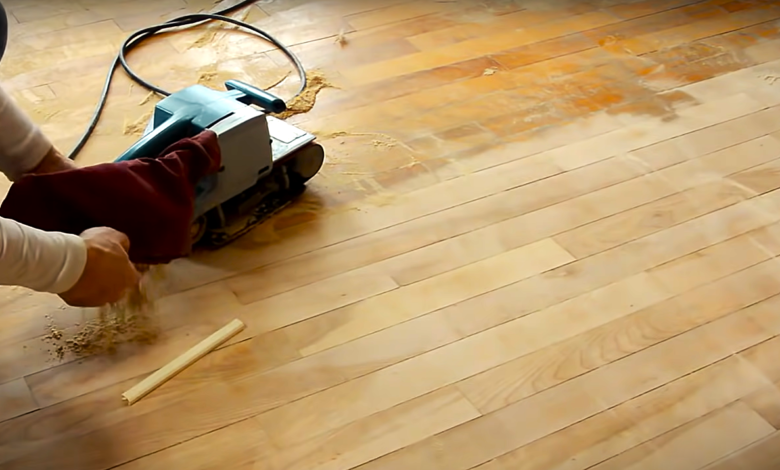Professional Floor Sanding: Restoring the Beauty of Your Wooden Floors

Wooden floors are a timeless and elegant addition to any home or business, offering both durability and aesthetic appeal. However, over time, they can lose their shine due to scratches, dents, and general wear and tear. Professional floor sanding is an effective way to restore wooden flooring, bringing back its original beauty and extending its lifespan. Whether you have hardwood, engineered wood, or parquet floors, expert sanding services can rejuvenate them, making them look as good as new. For top-quality wood floor restoration, PlancherNewlook provides expert services tailored to meet the needs of homeowners and businesses alike.
What Is Floor Sanding?
Floor sanding is a process that involves removing the top layer of a wooden floor using specialized sanding equipment. This helps eliminate imperfections, stains, and surface damage while preparing the floor for refinishing. The process includes several stages, from coarse sanding to remove deep scratches to fine sanding for a smooth and polished finish.
Key Benefits of Professional Floor Sanding
- Restores the Floor’s Natural Beauty
Over time, wooden floors accumulate scratches, stains, and dull spots. Sanding removes these imperfections and restores the original grain and color of the wood, enhancing the overall aesthetics of the space.
- Prolongs the Lifespan of Your Floors
Regular sanding and refinishing can significantly extend the life of wooden floors. By maintaining the surface, you can prevent deeper damage that might require costly replacements.
- Improves Indoor Air Quality
Worn-out floors can trap dust, allergens, and dirt in cracks and grooves. Sanding smooths the surface, making it easier to clean and improving indoor air quality, especially for allergy sufferers.
- Enhances Property Value
Beautiful, well-maintained floors are a key selling point in real estate. Professionally sanded and finished floors can increase the value of your home or business property.
- Customizable Finishes
After sanding, floors can be stained and sealed in various finishes to match your interior décor. Whether you prefer a glossy, matte, or natural look, refinishing allows for customization.
The Floor Sanding Process
- Inspection and Preparation
Before sanding begins, professionals inspect the floor for damages like loose boards, deep scratches, or nails sticking out. Any necessary repairs are done to ensure a smooth sanding process. The room is also prepared by removing furniture and sealing off other areas to prevent dust from spreading.
- Coarse Sanding
Using a heavy-duty drum sander, the topmost layer of wood is stripped away to remove old finishes, scratches, and dents. This step requires precision to avoid over-sanding, which can weaken the wood.
- Fine Sanding
Once the major imperfections are removed, finer sanding is done to create a smooth and even surface. This step ensures that the floor is ready for staining or sealing.
- Staining (Optional)
If a different wood tone is desired, a stain can be applied to change the floor’s color. Staining allows homeowners to match the floors to their interior style.
- Sealing and Finishing
Finally, a protective sealant is applied to preserve the floor’s appearance and durability. The finish can be oil-based, water-based, or polyurethane, depending on the level of shine and protection needed.
Choosing a Professional Floor Sanding Service
While DIY floor sanding may seem like a cost-saving option, it often leads to uneven sanding, missed spots, and potential damage to the wood. Hiring professional floor sanding experts ensures:
- High-Quality Equipment: Professionals use industrial-grade sanding machines for a more precise and efficient job.
- Expertise and Experience: Trained specialists know how to handle different wood types and flooring conditions.
- Dust-Free Sanding Technology: Advanced sanding systems minimize dust, creating a cleaner work environment.
- Time and Cost Efficiency: Professional services save time and prevent costly mistakes associated with DIY sanding.
Maintaining Your Newly Sanded Floors
To keep your floors looking pristine after sanding, follow these maintenance tips:
- Use Protective Pads: Place felt pads under furniture to prevent scratches.
- Clean Regularly: Sweep and mop with a damp cloth to remove dirt and dust.
- Avoid Harsh Chemicals: Use wood-friendly cleaners to maintain the finish.
- Control Humidity Levels: Excess moisture can cause wood to expand or contract, leading to damage.
Conclusion
Professional floor sanding is an excellent way to revitalize your wooden floors, restoring their natural charm and durability. Whether you’re renovating your home or maintaining a commercial space, expert sanding services ensure a flawless finish that lasts for years. By investing in high-quality sanding and refinishing, you enhance both the beauty and value of your property. For a professional touch and outstanding results, consider hiring experienced specialists who understand the intricacies of wood restoration.



